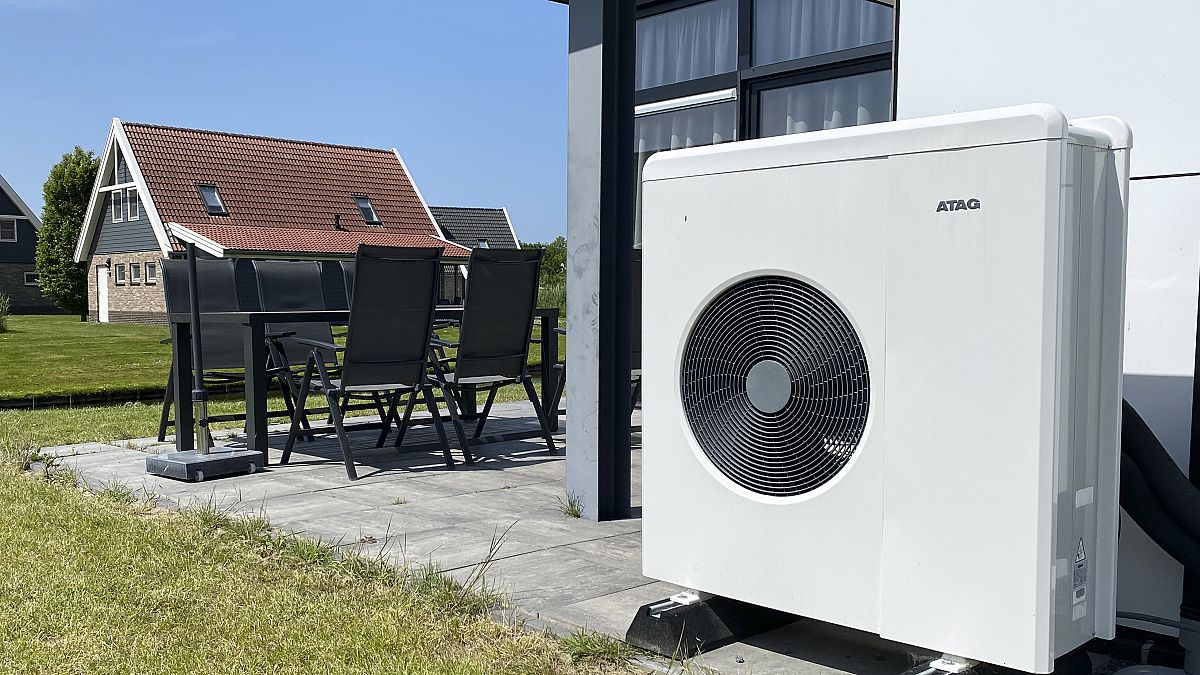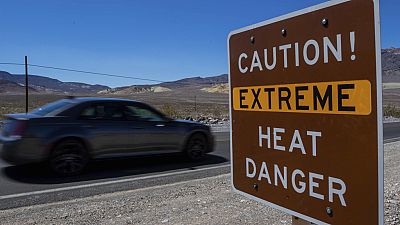Europeans may tend not to use air conditioning systems, but sales of air conditioners and heat pumps are rising steadily, especially in the southern countries of the continent.
Culturally, Europeans still restist air conditioning. However, figures show that the use of air conditioning has steadily increased on the continent, as temperatures rise since the turn of the last century.
According to the most recent report on the subject by the International Energy Agency (IEA), published in 2018 and based on data from 2016, the European Union has far fewer air conditioning units than China or the United States.
It has less air conditining units overall (96.5 million units) and less units per 1,000 inhabitants (around 20 units per 1,000 inhabitants).
In 2016, three countries alone accounted for two-thirds of the world's air conditioning units: China, the United States and Japan.
In 2022, the penetration rate of air conditioning is 90% in the United States and only 19% in Europe, according to more recent but less precise data from the IEA.
In its projections for the European Union, the IEA forecasts 130 million units installed by 2023 and estimates that the number of units chould quadruple on the continent by 2050.
One specific feature of the European market compared with that of the other countries in the IEA report is that air conditioning was first installed in commercial buildings such as offices, rather than in private homes.
According to the IEA, air conditioning has progressed faster in the domestic market than in commercial buildings.
However, getting AC installed often remains a small luxury.
A study carried out in 16 countries by four researchers from the Universities of Berkeley in the United States and Mannheim in Germany shows that, overall, the number of households that install air conditioning is higher in wealthier countries and is increasing more sharply among wealthier households.
The cost of installation is one obstacle; the increase in energy bills once the air conditioning is up and running is another.
The vicious circle of air conditioning
Increased use of air conditioning has three effects throughout the life cyce of an air conditioning unit, from its production to its delivery, its usage and recycling:
- an increase in energy consumption;
- an increase in greenhouse gases;
- warmer air, particularly in cities, with the heat island effect.
According to the International Energy Agency (IEA), air conditioning is currently responsible for emitting around one billion tonnes of CO2 per year, out of a total of 37 billion tonnes emitted worldwide.
Clara Camarasa, an expert at the International Energy Agency (IEA), explains that air conditioning "can put immense pressure on electricity grids and accelerate greenhouse gas emissions, exacerbating the climate crisis".
She adds: "Rapid growth in [air conditioning] requirements can lead to the use of inefficient, energy-intensive equipment. Air conditioners also often need large volumes of water, and some of them, with certain refrigerants, have a particularly warming potential, which is also harmful to the ozone layer".
The need for cooling buildings quadrupled between 1979 and 2022 in the European Union, and is becoming increasingly apparent in the north of the continent.
According to Eurostat, air cooling currently accounts for just 0.5% of final energy consumption by European households. This share varies according to the geographical location of countries and their exposure to high temperatures:
In cities, the use of air conditioning accentuates the heat island effect. As well as contributing to global climate change, air conditioning systems cool buildings by releasing heat into urban areas, which store heat and release it again, particularly at night.
In France, a team from Cired (Centre international de recherche sur l'environnement et le développement) led by Vincent Viguié, a researcher in the economics of climate change, has simulated the combination of a heatwave and the level of air conditioning in Paris.
They have calculated that the temperature in the streets of Paris would rise by 2.4°C at night if all the city's air-conditioned buildings maintained an indoor temperature of 23°C during a nine-day 38°C heatwave.
This heatwave would in turn prompt the use of air conditioning, in a vicious circle that might suggest we should abandon building cooling for good.
A basic necessity?
Yet in some regions, air conditioning has become a basic necessity.
"Some purists think we shouldn't use air conditioning at all, but I think it's just not feasible," says Robert Dubrow, director of the Center on Climate Change and Health at Yale University.
Access to air conditioning already saves tens of thousands of lives a year, a figure that is rising, according to a recent IEA report, which Robert Dubrow co-wrote.
Studies show that the risk of heat-related death is reduced by around 75% for households with air conditioning.
All the experts agree that the sensible course of action is not to reduce the use of air conditioning as such, but to promote more efficient systems on the one hand, and to give priority to insulating buildings and planting vegetation on the other.
Clara Camarasa, an expert at the International Energy Agency (IEA), points out that "nature-based solutions (...) are attracting increasing interest as a means of combating urban heat islands. Green spaces, green roofs... (and) can make cities more resilient, as a complement to efficient technologies."
She therefore believes that "prioritising reversible heat pumps and improving building insulation can help build more sustainable and resilient cities, while tackling the increased demand for energy."



